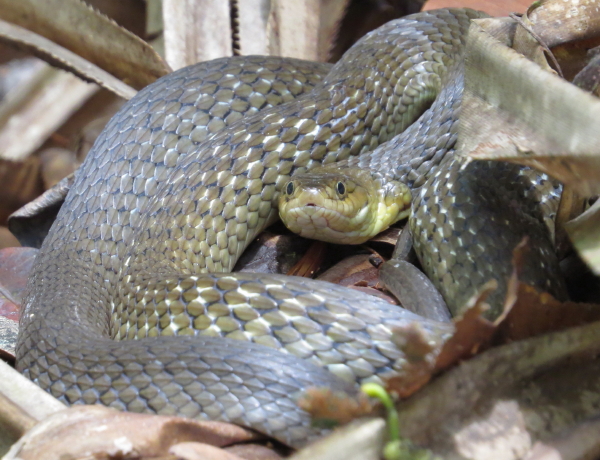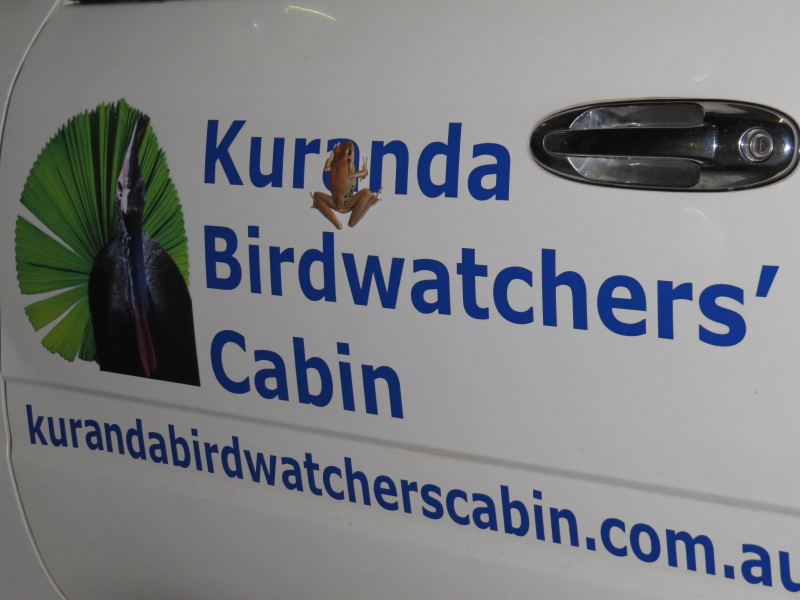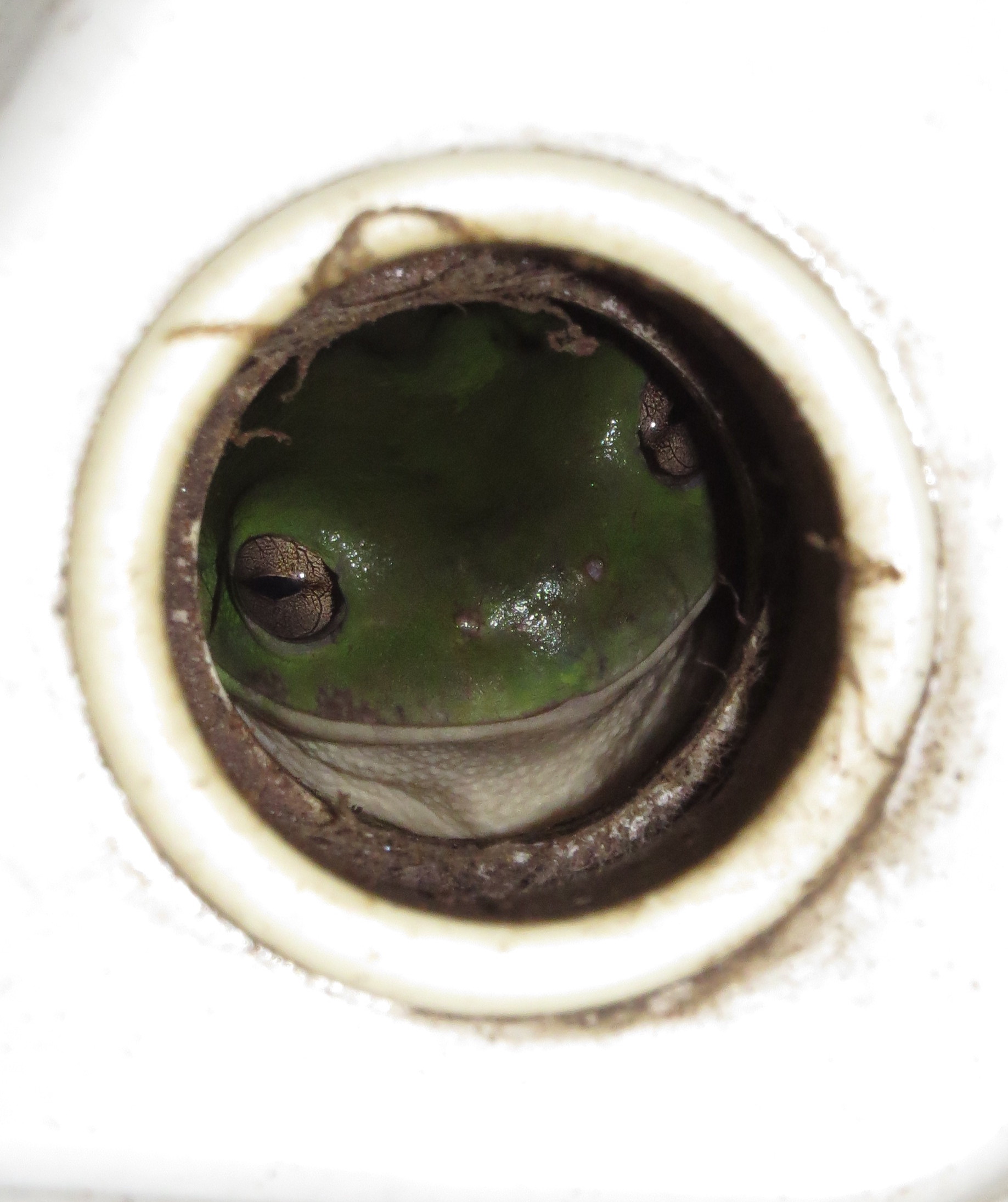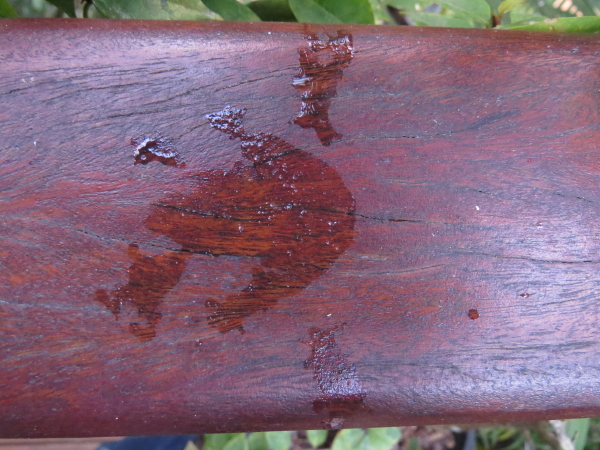
Frogs turn up in unusual places:
This is a female Stony-creek Frog (Litoria jungguy):
This Common Green Tree-frog (Litoria caerulea) spent the long dry spell in the overflow of an outdoor basin, quite safe from a butcherbird’s beak or a snake’s gaping jaws.
Another frog often hopped back to its hiding place underneath our veranda roof via the birdbath on the veranda railing, leaving behind tell-tales signs :
After the first substantial showers, our pond hosted several frog orgies. This pair of Barred Frogs (Mixophyes coggeri) was still active after sunrise. The female was keen to get rid of the male, telling him with several deep, short grunts to release his grip on her . This is the only occasion when one hears female frogs calling.
She was probably keen to seek shelter for the day, and rightly so: this large Keelback entered the pond just moments later. When I saw it emerge from the water and disappear into the forest, it did not sport a big bulging belly!
The Keelback (Tropidonophis mairii) is the only Australian snake which can eat the toxic cane toads without ill effect. Its ancestry lies in Asia, where snakes had a long time to adapt to poisonous toads.
Named for its strongly keeled scales, which give it a “rough”-looking skin, it is easy to identify. The only other snake, which looks similar is the highly venomous Rough-scaled snake (Tropidechis carinatus), which fortunately lives at higher altitudes in North Queensland, and not around Kuranda. You can tell them apart by having a close look at the scales between their eyes and nostrils (preferably by taking a photo and zooming in, rather than approaching the snake too closely!).
Most colubrid snakes, like the Keelback, have a loreal scale between eye and nostril,
whereas in venomous elapid snakes (to which Death Adders, Taipans and Brown Snakes belong), the scale containing the nostril touches the scale which is near the eye:















